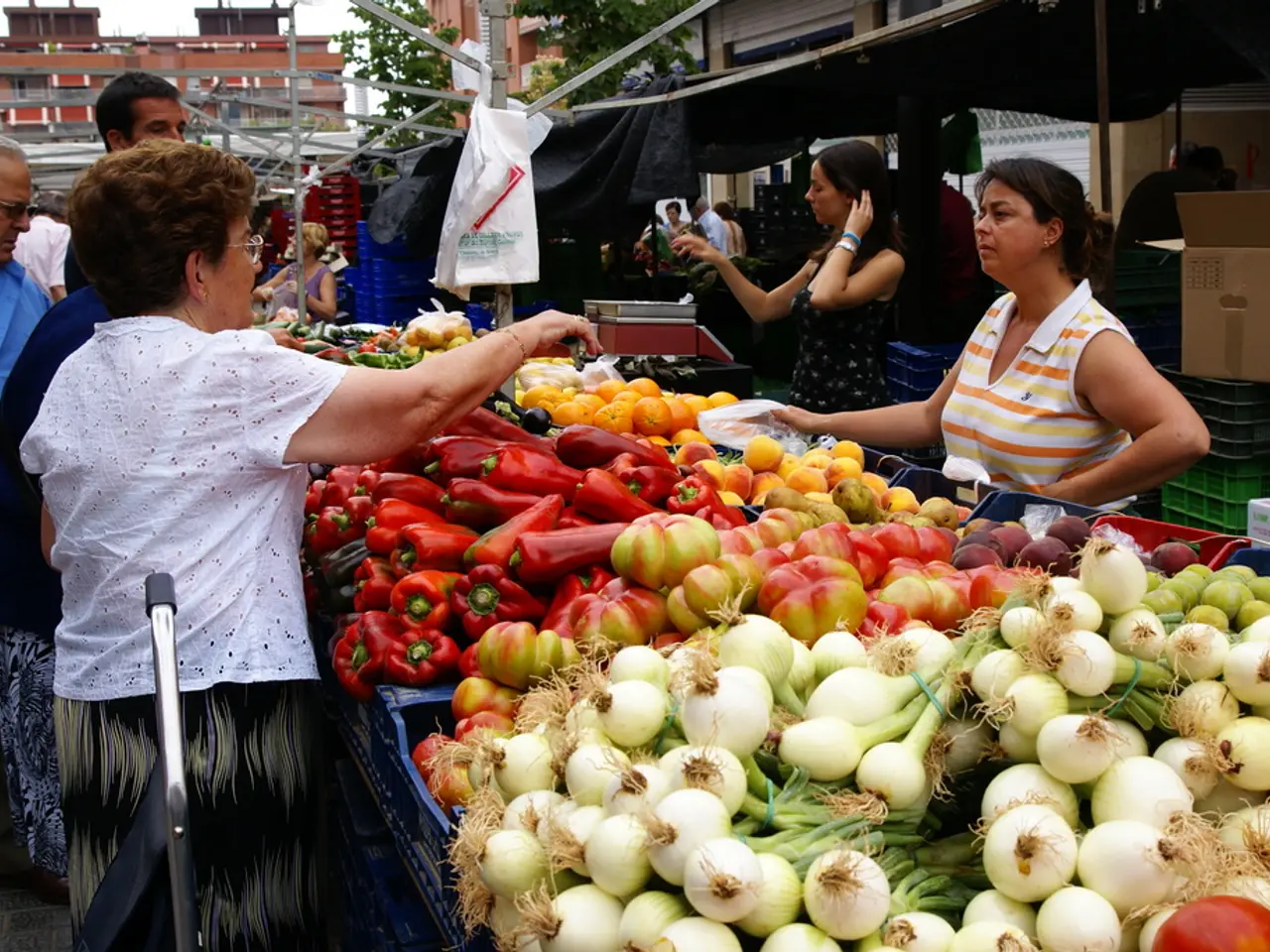Innovative approach tackling the mounting issue of global plastic pollution
In the ongoing battle against plastic pollution, scientists and engineers are making significant strides in developing eco-friendly alternatives. One such solution is biopolymers, a class of materials derived from plants, animals, and microorganisms.
These biodegradable materials are being hailed as a potential game-changer in the fight against plastic waste. Companies like BASF, NatureWorks LLC, Novamont, Corbion, and institutes such as Wageningen University & Research and Fraunhofer Institute for Process Engineering and Packaging are actively involved in the development and production of biodegradable packaging materials.
The global plastic production landscape is vast, with around 40% of it being utilised for packaging. This staggering statistic underscores the urgency of finding sustainable alternatives. Fortunately, studies project a gradual and substantial substitution of plastics derived from fossil fuels with bioplastics by 2050.
The United Nations is also actively engaged in the quest to end plastic pollution, with a treaty in the works. However, progress has been slow due to competing economic interests among the 175 countries recently gathered at a meeting in South Korea.
The potential applications of biopolymers extend beyond packaging. They are being explored for use in medicine, particularly in products like wound dressings, sutures, drug delivery systems, and tissue implants.
One significant advantage of biopolymers is their biodegradability. Unlike regular plastics which can take hundreds of years to break down, biopolymers can be composted or turned into biogas. This makes them a more environmentally friendly option, especially in regions like the Asia Pacific where water resources are precious.
Researchers are also investigating novel sources for biopolymers, including algae-based polymers, silk fibroin proteins, and bacterial cellulose. Furthermore, biopolymer composites are being developed by mixing biopolymers with natural antimicrobial agents or fibres from agricultural waste.
Yamini Sudha Sistla, Associate Professor at the School of Engineering, Shiv Nadar Institution of Eminence, is among those at the forefront of this research. She and her colleagues are working tirelessly to improve the strength and flexibility of biopolymers for broader industry applications.
Every year, the world generates 57 million tonnes of plastic waste, and the global use of plastics is expected to increase from 464 million tonnes in 2020 up to 884 million tonnes in 2050. This alarming trend highlights the necessity of finding sustainable solutions like biopolymers.
The article you are reading was originally published under Creative Commons by 360info. It is a timely reminder of the urgent need to address the plastic crisis and the promising role that biopolymers could play in achieving sustainable development, particularly in the context of the SDGs of Consumption (12) and Climate (13).
However, it is important to note that despite efforts to reduce plastic pollution, it continues to be a significant environmental issue. Microplastics have even been detected in the bloodstreams of people and farm animals, raising concerns about their impact on human health.
As we move forward, it is crucial to continue supporting research and development in the field of biopolymers and other sustainable alternatives to traditional plastics. Only then can we hope to effectively combat the plastic crisis and ensure a cleaner, healthier future for all.
Read also:
- Climate Change Impact Mitigation in Health: Reducing the Disparity of the Health Sector's Exposure to Climate Change Challenges
- Increased measles cases Approaching 1,500 in the United States, with a new case detected in the Chicago metropolitan area.
- An Ear Infection Explained: A Discussion on Otitis Media
- Recommendations by CDC advisers for limiting MMRV vaccine choices in younger children, and forthcoming decision on hepatitis B vaccine restrictions.





